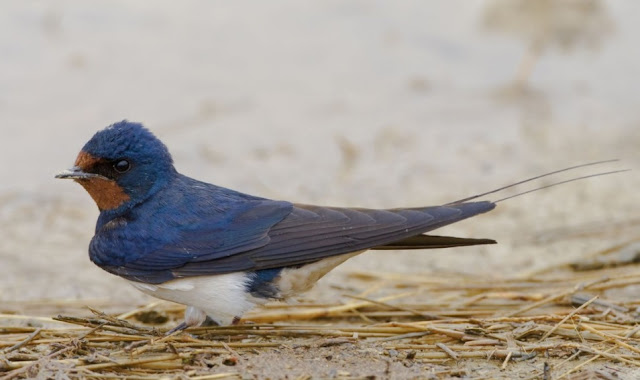The Tawny Owl's Life
The tawny owl is among one of the most common owl species in Europe. It inhabits all kinds of landscapes, varying from deciduous and coniferous forests to city parks and green residential locations, where he isn't constantly noticed because of his nocturnal lifestyle. The tawny owl mainly breeds in tree hollows and starts nesting very very early in the year (February or March). Perhaps best known is the tawny owl for the ghostly call of the guys - such as used in frightening movies - which wants that reacted to by the female.
 |
| The tawny owl |
RECOGNITION
The tawny owl relates to the measurement of a crow and has a large spherical head and large, wide wings. There are 3 color variations: grey, dark brown, and rust red. Longitudinal red stripes show up on the plumage in all these color forms. The shoulders and wings are attracted by white drops. The eyes are black. Throughout the day they usually rest close to a tree trunk. Stocky body and relatively large head.
LIFESTYLE
THE TAWNY OWL BREEDS
Sometimes laying period as very very early as February, usually in March. The clutch ranges from 1-7 eggs. Usually 2-4 eggs. No brood in nutrient-poor years. One clutch yearly. Eggs incubated from the second or 3rd egg. And such an incubation period 28-29 days. Nest in a tree cavity, also nest boxes or spaces in frameworks. Sometimes on dust or in the magpie test. Children sometimes climb up from the nest after 2 weeks, but usually in the future, and show up for sanctuary to rest. Flying after 3 months.
THE TAWNY OWL LIVING AREA
Open deciduous or mixed woodland, farmyards, (city) parks, green residential locations with old trees, large interior lawn problems. Also in your location in dune locations, breeding in rabbit openings. The environment has sufficient (old) trees, food is available and accessible throughout the year and there are great deals of places for rust and breeding. Because of its versatility in choice of the sufferer, the tawny owl can thrive in a relatively a good deal of landscape kinds.
THE TAWNY OWL FOOD
Choice of sufferer very varied, mainly all kinds of small mammals and birds, up to the measurement of young bunnies and pigeons. Furthermore, frogs and toads, beetles, earthworms (young), sometimes fish.
THE TAWNY OWL MOVEMENT
Pronounced local bird and long-lasting set bond. A set of tawny owls remain in their location throughout the year. Children are shed from drops. These usually settle within a radius of 50 kilometers from the place of birth.
PROTECTION
Of all 6 breeding owl species in the Netherlands (the others are barn owl, little owl, eagle owl, short-eared owl, long-eared owl), the tawny owl is among one of the most effective. Although a tawny owl prefers to breed in open deciduous woodland with oak trees, it will also go for small bushes or city parks. As long as there are large, old trees someplace nearby. The tawny owls have also plainly capitalized on the many nest boxes that have been waited for the Netherlands.
WHAT WE DO
Bird Protection regularly supports species functioning groups that help birds of sufferer and owls.
WHAT CAN YOU DO
Where there is an appropriate environment for the tawny owl but there is no nesting space, a nest box can be considered. Leave the tawny owls alone there. Tawny owls can be aggressive and hazardous when you get to the nest. Management focusing on old deciduous woodland with many dead and passing away trees is best for tawny owls.

